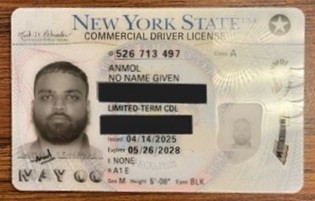Oklahoma Enters the Low-tax Sweepstakes
states have enacted income tax reduction in the last four years.
Among those are most of the states near or bordering Oklahoma. Arkansas dropped their top rate from 4.9% to 3.9%, Kansas has voted to gradually reduce theirs to 4%, and blue state Colorado’s rate now sits at 4.4% and they recently provided a temporary reduction to 4.25%. Mississippi just made history by becoming the first state in the U.S. – other than oil-rich Alaska – to pass legislation completely phasing out its income tax. Assuming current trends continue, their rate will be zero within ten years.
Most people already know that Texas has no state income tax, making it one of nine states – Florida, Tennessee, Alaska, Wyoming, New Hampshire, Nevada, South Dakota and Washington being the others – to have that distinction. What about Oklahoma? Our rate is currently 4.75%, which is down from 7% in the 1990s, but a higher rate than every nearby state except New Mexico, assuming state officials don’t change our rate before Kansas’s reduction takes effect. Oklahoma has multiple tax brackets, but since they’re not indexed for inflation, most taxpayers pay the top 4.75% rate.
Governor Kevin Stitt has long recognized this as a problem and has continued his push to gradually phase out Oklahoma’s tax on work and investment. “I don’t want to be left behind, as other states continue to move this needle,” he said. “The only thing we can’t afford is to sit back.”
“Every time we’ve cut taxes,” Stitt added, “we’ve seen our revenue actually increase. When we give money back to the taxpayer, the money doesn’t disappear. It stays in citizen’s pockets. I believe they can spend their money better than the government can.”
The last income tax cut occurred in 2020, a .25% rate reduction. While the House has passed multiple rate cuts since then the Senate hasn’t, as its leadership has feared that reduced revenues, especially if there’s a downturn, won’t keep pace with annual spending amounts.
That may be about to change. New Senate President Pro Temp Lonnie Paxton believes in tax cuts. “We should prioritize the taxpayer and find a way to give them relief in the form of a tax cut,” he has said. “I philosophically believe that Oklahomans shouldn’t be taxed for their work.”
That changed mindset paved the way for the Senate’s passage by a 36-9 vote on April 10th of House Bill 1539, co-authored by state Senator Micheal Bergstrom (R-Adair) and state Rep. Mark Lepak (R-Claremore). It previously passed the House on a 76-20 vote, but must return there for a final vote to restore its title. After that, it will go to Governor Stitt, who’s expected to sign it into law.
The bill would cut Oklahoma’s 4.75% personal tax rate by a quarter point each year that net state revenue increases by at least $300 million. That process would continue until the tax is completely repealed. This “trigger mechanism,” says Senator Bergstrom, “provides a safe way for Oklahomans to receive tax relief while at the same time protecting state services during a revenue downturn.” He added that eight other states are currently pursuing policies that will eliminate their income taxes, which means up to 18 states may have no income tax in the near future.
The bill is not without its critics. Sen. Julia Kirt (D-Oklahoma City) – the Senate Democrat leader – says the measure disproportionally benefits the wealthy. “We’re talking about the bottom 20% of Oklahomans getting back perhaps a $15 movie ticket, while the top 1% gets back $6000 each. Instead of overwhelmingly benefiting wealthy families, we should focus on tax relief that could actually help working Oklahomans.”
However, if you’re a single filer with an income of at least $7,200, or a joint filer who makes more than $12,200, you’ll benefit from the tax cut, meaning practically every Oklahoman will see savings. Plus, as state Sen. Dusty Deevers (R-Elgin) says, “if you tax people’s labor, it doesn’t make them want to be more productive. And if you disincentivize the people who are building more businesses and providing more jobs, that will in turn hurt everyone. Pinching off the middle class hurts everybody. We need a thriving middle class if we’re going to support the poorest among us.”
Sen. Shane Jett (R-Shawnee) adds that House Bill 1539 does not pit rich versus poor in a class-warfare ideological battle, “This is simply saying if you are making or creating wealth in Oklahoma, we respect you and want to put that money back in your pocket.”
Critics also question whether any decrease in income tax collection might eventually result in other taxes, such as property taxes, having to be raised. Bergstrom says no, because the bill is structured to prevent that possibility. Plus, contrary to popular belief, five states with no personal income tax have the same or a lower effective property tax rate than Oklahoma.
Another key income tax reform bill continued to move through the Oklahoma legislature. Rather than lower rates, Senate Bill 304, authored by Senator Dave Rader (R-Tulsa) would replace Oklahoma’s graduated bracket system with a fixed 4.75% flat tax starting in tax year 2025. It also raises the standard deduction to $13,550 for single filers, $19,225 for heads of household, and $27,100 for joint filers. Rader said it would make filing taxes simpler, save Oklahomans money, and promote economic growth. “If you’re looking for a path to zero Income tax, this is a way to do it,” Rader said. Most Oklahomans would see their taxable income move to zero with the increase in the standard deduction.
The greater tax relief that lower and middle income Oklahomans would receive from Rader’s measure even drew Democratic support when it came up for a vote on March 25th. It passed the Senate 44-1, with conservative Sen. Warren Hamilton (R-McCurtain) casting the lone dissenting vote. But, it must make it through two committees before receiving full consideration by the House.
Other tax reform measures introduced this session include Senate Bill 299 and Senate Bill 60, also authored by Rader, and Senate Bill 291, authored by Sen. Adam Pugh (R- Edmond). The first two bills aim to lessen tax burdens on businesses, while Pugh’s creates an income tax credit for Oklahomans when state revenue growth exceeds 10% from the previous year.
It’s worth noting however, that these various initiatives for lowering taxes have been introduced at a time when Oklahoma, similar to many states, could be entering a period of fiscal uncertainty. That’s why senators such as Rader, House Speaker Kyle Hilbert and Senate Appropriations Committee Chairman Chuck Hall (R-Perry) urge a cautious, more targeted approach to potential state tax cuts. Projected revenues for fiscal year 2026 are down $38 million from FY 2025, which are $1.1 billion less than the year before. Federal cost-saving initiatives could further increase each state’s fiscal burden, particularly for education and for Medicaid, which is used by 1 in 4 Oklahomans. Elimination of the 4.5% grocery tax cut, while welcome relief, reduces state revenues by about $400 million. Recent legislative elimination of the franchise tax, marriage penalty, and passage of a tax credit for private and home schools, could total another $321 million, which must be accounted for somewhere.
“We can’t do this with an ax, we need a scalpel,” warned Hilbert.
Perhaps that’s true, but the broad-based approach of steadily reducing the 4.75% state income tax when adequate revenues exist has considerable merit. Suppose you’re an individual, small business or major corporation that is considering a move to or expanding in Oklahoma. If your decision is primarily a financial one, you’re likely to compare the tax rates of competing states and not “get into the weeds” of comparing the various deductions, rebates, credits and exemptions to see who comes out on top.
“Corporations and people look at the rate,” says former state senator and current gubernatorial candidate Mike Mazzei. “They don’t get into the other stuff. We should wipe out the waste and the silly exemptions that other states don’t do.” Mazzei served the people of Senate District 25 for 12 years, from 2004-2016. For most of that time, he was chairman of the Senate Finance Committee, where he oversaw tax policy. From 2018-2020, he served as Governor Stitt’s top budget adviser.
Mazzei said there’s a path available for Oklahomans to lower the rate. If you take away the standard deduction, you can reduce to 4.25%. Then if you remove all the rebates, exemptions and special tax credits, you get to 3.25%.Tax some voluntary services (such as dog grooming, sporting event tickets, etc.), as most states do, and you get down to 2.5%.Then you look at wasteful spending in state government and what functions are better performed in the private sector. Mazzei says a $750 million dollar state budget cut is realistic, although some hard conversations would have to occur between the governor, the legislature and the people.
Whichever path is taken; it’s encouraging that this year’s legislature understands the urgency of passing meaningful tax reform. Let’s hope they create a bill the governor can sign – one that will make Oklahoma more financially competitive.
Tim Bakamjian is an independent real estate broker and investor living in Tulsa. He holds a bachelor’s degree in political science from Kenyon College in Ohio and a bachelor’s in journalism from the University of Tulsa. He’s married with one grown child. Political and economic issues have been a life-long interest. He may be contacted at: tbakamjian@gmail.com










Latest Commentary
Thursday 30th of October 2025
Thursday 30th of October 2025
Thursday 30th of October 2025
Thursday 30th of October 2025
Thursday 30th of October 2025
Thursday 30th of October 2025
Thursday 30th of October 2025
Thursday 30th of October 2025
Thursday 30th of October 2025